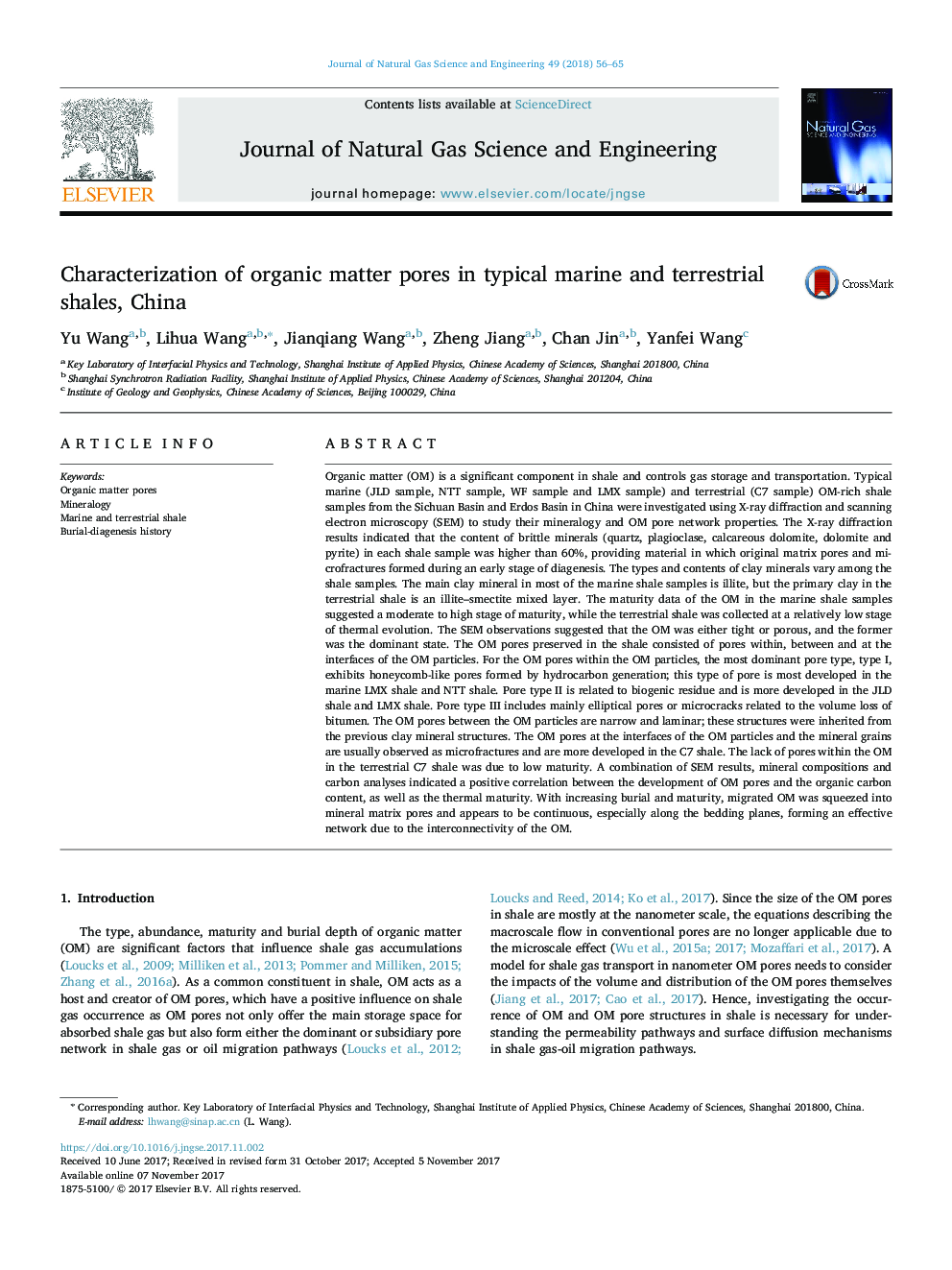| کد مقاله | کد نشریه | سال انتشار | مقاله انگلیسی | نسخه تمام متن |
|---|---|---|---|---|
| 8128462 | 1522994 | 2018 | 10 صفحه PDF | دانلود رایگان |
عنوان انگلیسی مقاله ISI
Characterization of organic matter pores in typical marine and terrestrial shales, China
ترجمه فارسی عنوان
خصوصیات منافذ مواد آلی در شیل های معمولی دریایی و زمین، چین
دانلود مقاله + سفارش ترجمه
دانلود مقاله ISI انگلیسی
رایگان برای ایرانیان
کلمات کلیدی
منافذ مواد آلی، کانی شناسی، شیل های دریایی و زمینی، تاریخچه قبرستان
موضوعات مرتبط
مهندسی و علوم پایه
علوم زمین و سیارات
علوم زمین و سیاره ای (عمومی)
چکیده انگلیسی
Organic matter (OM) is a significant component in shale and controls gas storage and transportation. Typical marine (JLD sample, NTT sample, WF sample and LMX sample) and terrestrial (C7 sample) OM-rich shale samples from the Sichuan Basin and Erdos Basin in China were investigated using X-ray diffraction and scanning electron microscopy (SEM) to study their mineralogy and OM pore network properties. The X-ray diffraction results indicated that the content of brittle minerals (quartz, plagioclase, calcareous dolomite, dolomite and pyrite) in each shale sample was higher than 60%, providing material in which original matrix pores and microfractures formed during an early stage of diagenesis. The types and contents of clay minerals vary among the shale samples. The main clay mineral in most of the marine shale samples is illite, but the primary clay in the terrestrial shale is an illite-smectite mixed layer. The maturity data of the OM in the marine shale samples suggested a moderate to high stage of maturity, while the terrestrial shale was collected at a relatively low stage of thermal evolution. The SEM observations suggested that the OM was either tight or porous, and the former was the dominant state. The OM pores preserved in the shale consisted of pores within, between and at the interfaces of the OM particles. For the OM pores within the OM particles, the most dominant pore type, type I, exhibits honeycomb-like pores formed by hydrocarbon generation; this type of pore is most developed in the marine LMX shale and NTT shale. Pore type II is related to biogenic residue and is more developed in the JLD shale and LMX shale. Pore type â
¢ includes mainly elliptical pores or microcracks related to the volume loss of bitumen. The OM pores between the OM particles are narrow and laminar; these structures were inherited from the previous clay mineral structures. The OM pores at the interfaces of the OM particles and the mineral grains are usually observed as microfractures and are more developed in the C7 shale. The lack of pores within the OM in the terrestrial C7 shale was due to low maturity. A combination of SEM results, mineral compositions and carbon analyses indicated a positive correlation between the development of OM pores and the organic carbon content, as well as the thermal maturity. With increasing burial and maturity, migrated OM was squeezed into mineral matrix pores and appears to be continuous, especially along the bedding planes, forming an effective network due to the interconnectivity of the OM.
ناشر
Database: Elsevier - ScienceDirect (ساینس دایرکت)
Journal: Journal of Natural Gas Science and Engineering - Volume 49, January 2018, Pages 56-65
Journal: Journal of Natural Gas Science and Engineering - Volume 49, January 2018, Pages 56-65
نویسندگان
Yu Wang, Lihua Wang, Jianqiang Wang, Zheng Jiang, Chan Jin, Yanfei Wang,
